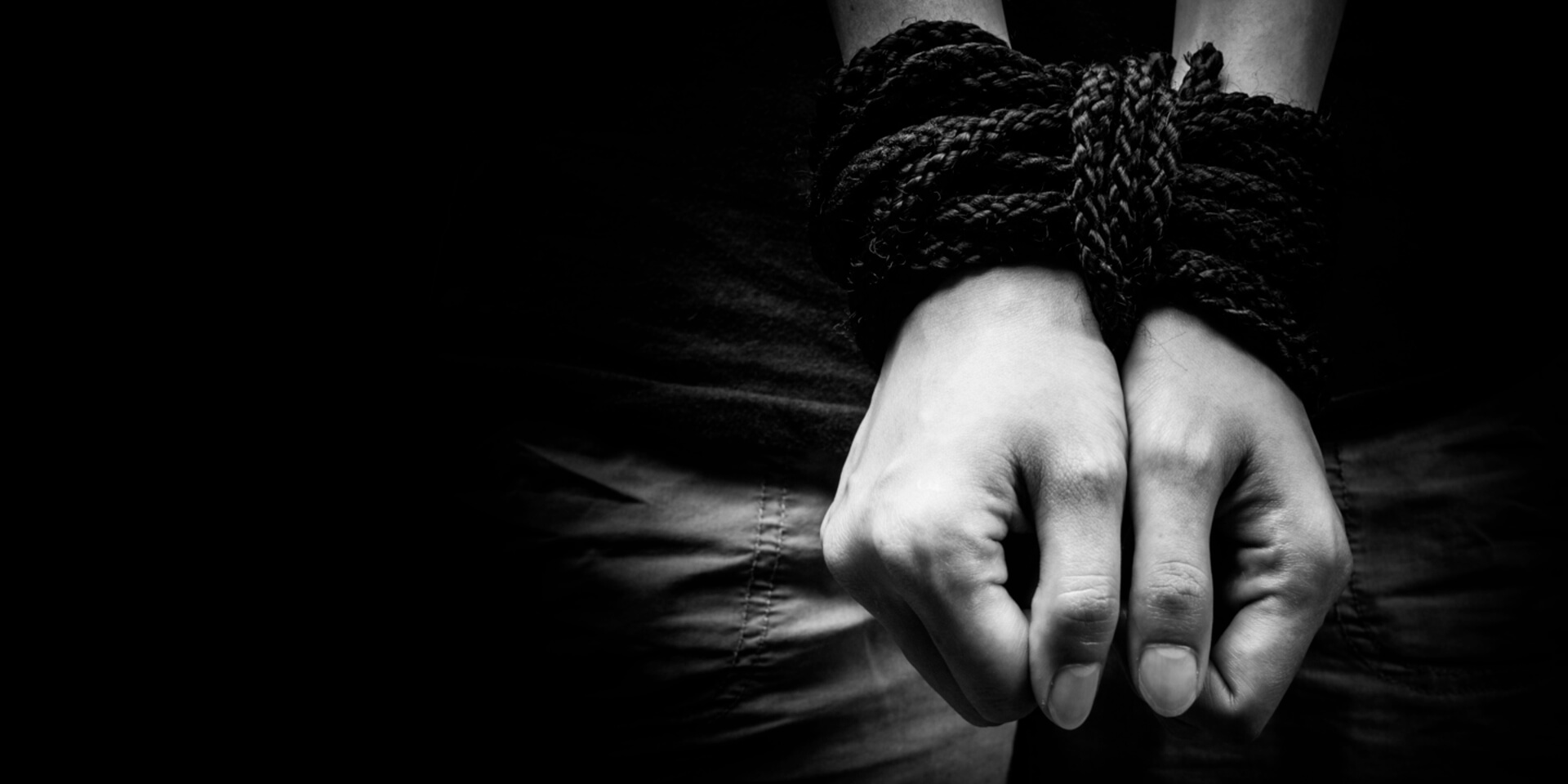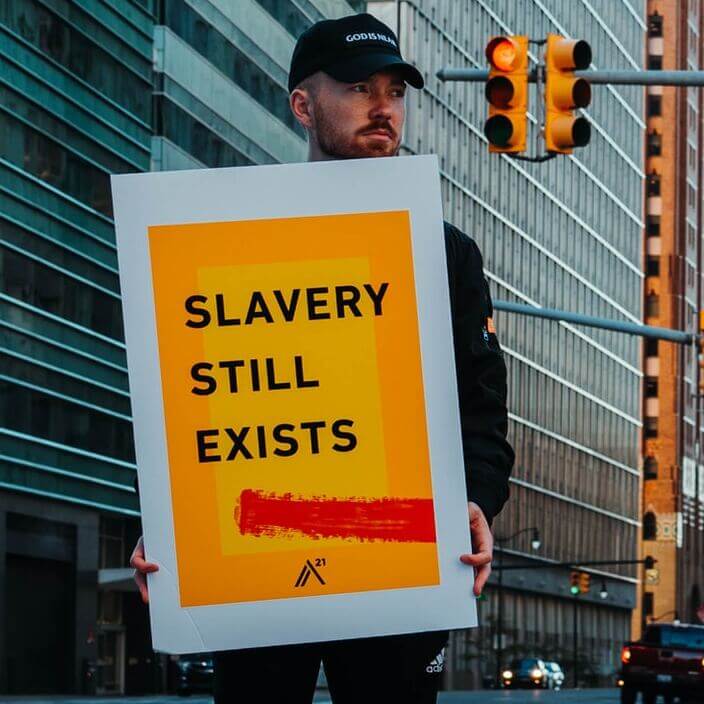
Modern day slavery

10 things everyone should know
On this page you can find more information about human trafficking and modern day slavery.
You can also download the free PDF '10 things everyone should know about human trafficking' by John Cotton Richmond.
Modern day slavery and human trafficking
Human trafficking
Globally over 40 million women, men, children are in slavery right now. 27 million in sex slavery, 5.5 million are children. More than 150 Billion profits/gains for the exploiter/trafficker/pimp.
According to the definition of the United Nations, Human Trafficking means; "The recruitment, transportation, transfer, harbouring or receipt of persons for the purpose of exploitation."
The victims are coerced into a position of dependence, by their traffickers through debt bondage, violence, and/or drugs. The victims become "exploited" goods and are deprived of their personal rights, freedom of speech, Independence, and self-respect.
Who are trafficked?
It's not just foreign poor people who are trafficked. More than 1/4 victims found in the UK last year were British, followed by Albanians and then Vietnamese. Any age, class, religion, nationality, gender, colour can be a victim of trafficking.
Vulnerable people are more at risk such as the homeless, minors, young adults, migrants, people working in prostitution, people belonging to ethnic minorities, children in foster care or homes, people living in poverty, people with disruptive home lives, people in crisis or conflict situations.
How?
Traffickers don't always kidnap a person and hide them in containers and traffickers don't always bring a person to another country! Trafficking can be bringing a person to the house next door or next street, or within their own country. Traffickers don't always use violence and force. They can use physical violence but often use psychological violence, manipulation and brainwashing, through threats and control.
Grooming & Lover boys
Grooming is when someone gets close to a person with the intention to abuse them and force them to do things for the gain of the exploiter. It starts with deception, can be via Internet, platforms such as Facebook or forums, WhatsApp or face to face. It may be done by strangers, "friends", parents, guardians, family, even partners.
The first step is to gain the trust of the victim. The victim is usually led to believe they are not being controlled, they will get gifts, rewards, compliments and affection. Some groomers get the victim addicted to drugs/alcohol. Lover boys pretend to be romantically involved. The Second step is to isolate them from friends and family and get them dependent on the groomer. Then after a time they get forced into doing things for the gain of the groomer.
Types of Modern-Day Slavery:
-
Criminal exploitation
Forced to commit crimes. Forced to beg, steal, sell stolen stuff, grow or deal drugs.
-
County lines
Gangs and drug dealers force mostly young people to transport and sell drugs all over the country, using county line mobiles.
-
Forced marriage
Forced to marry against their will, often under aged. Often used for sex and labour.
-
Forced labour/bonded labour/domestic labour
Forced to work for little or no money or to pay a debt off that has so much interest that it's impossible to pay off. Often sleep in the same place as the work or in groups locked up and transported back and forward to work. This may occur on building sites, nail bars, car washes, drug farms, factories, takeaways, restaurants or in private homes.
-
Organ Harvesting
Some people are forced into selling an organ because of poverty. Some are forced, kidnapped and even murdered for this purpose. As well as the standard risks of major surgery, this practice is illegal. So, if you see someone with a missing organ and no explanation why or a scar looks suspicious ask questions and check what has happened.
Signs of sexual exploitation:
- May appear scared, anxious, depressed, withdrawn and unable/reluctant to make eye contact. May be branded with tattoos (indication of ownership). Tattoos can be anywhere on the body, but mainly chest/under collar bone, arms, legs, above genital area or on the back of the neck. Tattoos can be initials of the exploiter, or full name, crowns, roses, bags of money with an amount in, bar codes.
- May not speak English (or only know sexual English language).
- May be dressed inappropriately/not dressed age appropriately if a child.
- May lie about age or address, (eg may say they are much older than they look).
- May not give an address and say they are just passing through or visiting.
- May have had multiple pregnancies/abortions and sexual transmitted infections.
- May have unexplained bruises, cuts and other injuries, mostly in hidden places.
- May answer the phone immediately and look scared and anxious while doing it (this if they come alone). This is a sign of being controlled.
- Have someone with them speaking for them or translating.
- May look malnourished.
- In different countries may not have medical insurance and want to pay in cash.
- Child victims may have mood swings, anger, be anxious, have lots of stomach aches or have inappropriate sexual behaviour.
Would you know what to do?
Doctors and other health care professionals may encounter victims more often than they realise. Doctors are in a unique position to help a victim.
85% of victims have had contact with a health care worker (doctors, dentists, primary care) while being trafficked. 80% in the first year. A survey of 1000 doctors showed that fewer than 10% of them ever suspected they had been in contact with a victim of slavery.
Only 20% of these said they would know what to do if they encountered a victim.
It can be complicated to identify a victim. Would you know what to do; what signs and red flags to look for? Do you know the law and procedure for reporting safety concerns?
Most importantly try and separate the victim from the person with them. Maybe have a code with colleagues, nurses and receptionists. For example, when you suspect someone is a victim you could phone through to someone and ask them to come and take the person who is with the victim to another room to fill out form "B50"while you examine the victim. (Even have a form with enough questions to give you at least 15 minutes alone with the victim).
When talking to the victim, don't show you are shocked by anything they say. Don't look or speak in a judgemental way. A look of shock or judgement can be very powerful in a negative way and make the victim close up. Don't use language such as the word prostitute. Have an open manner, be compassionate & kind. You can make a difference in someone's life and it starts with your attitude towards them!
Don't be afraid to ask questions: it shows care and they will be grateful someone shows care,
Ask things like:
- Are you OK?
- Are you safe?
- Are you hungry? (if yes arrange some food and drink)
- Are you experiencing any pain?
- Where do you live and who do you live with?
- Do you want me to phone the police?
- Do you want to contact me another time and get help and to a safe place?
It probably won't be possible to help them immediately (it would be great if the hospital /surgery had an emergency plan in place). Give them an emergency number to phone but not in an obvious way as this will put them in danger and the pimp will find it! Have printed cards ready with this number on but disguised as something else, like the number for an x-ray department and tell them it's an emergency number where they can get immediate help. Tell them they won't get in trouble with the police if they are illegal, that there is help and support and a safe place for them. They can be referred into the National Referral Mechanism (NRM) for Modern Day Slavery and trafficking and receive support. Remember the key is TRUST.
Ask questions and conduct examinations in a sensitive way as they may be traumatised. Take action but thick safety first. Know the risk to the victims. You may be wrong thinking someone is a victim 99 times out of 100, but don't be put off as the one time you are right may save someone’s life!
UK Modern day slavery hotline: 0800 121700
Jane Lasonder, Nov 2020.